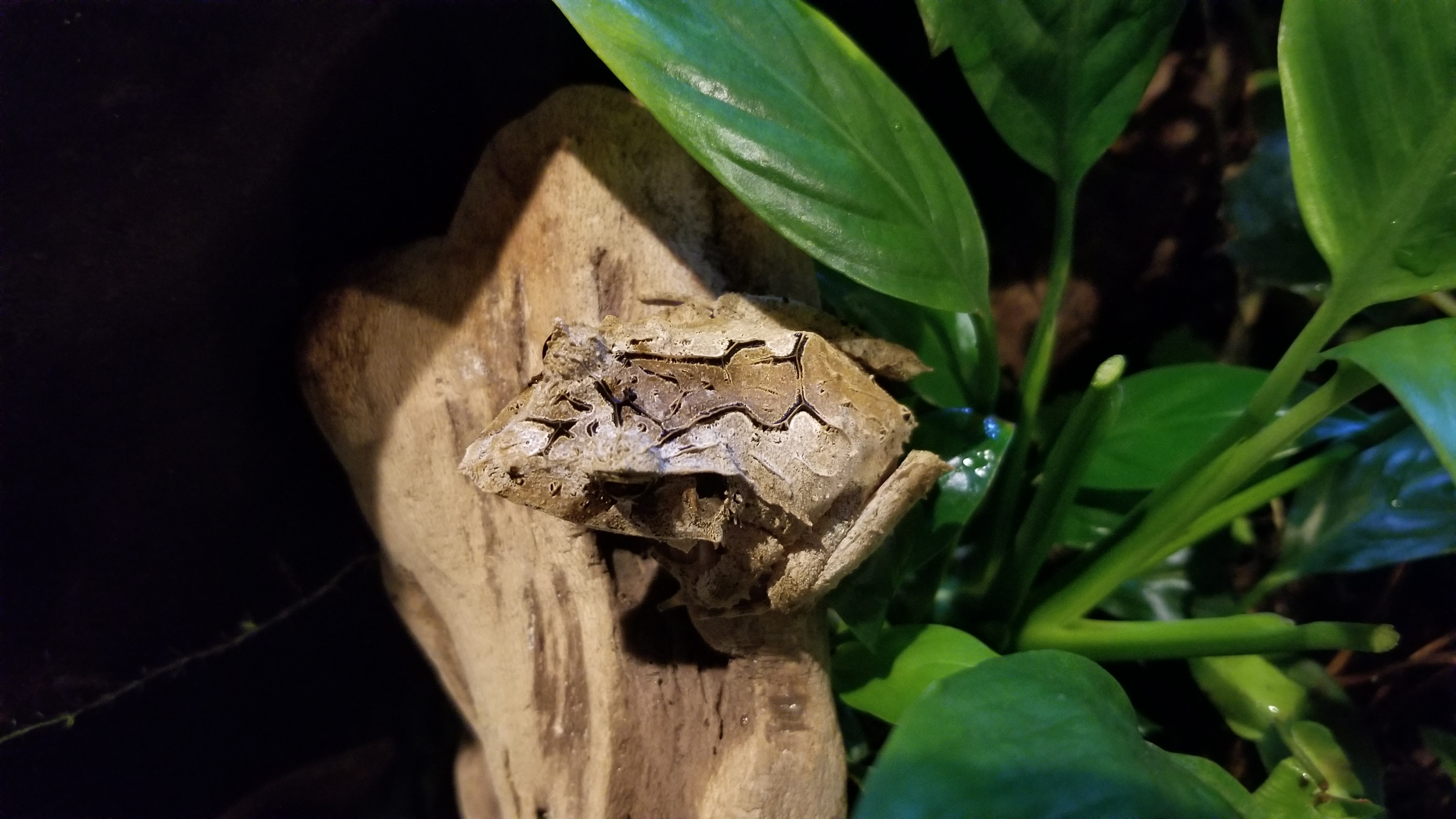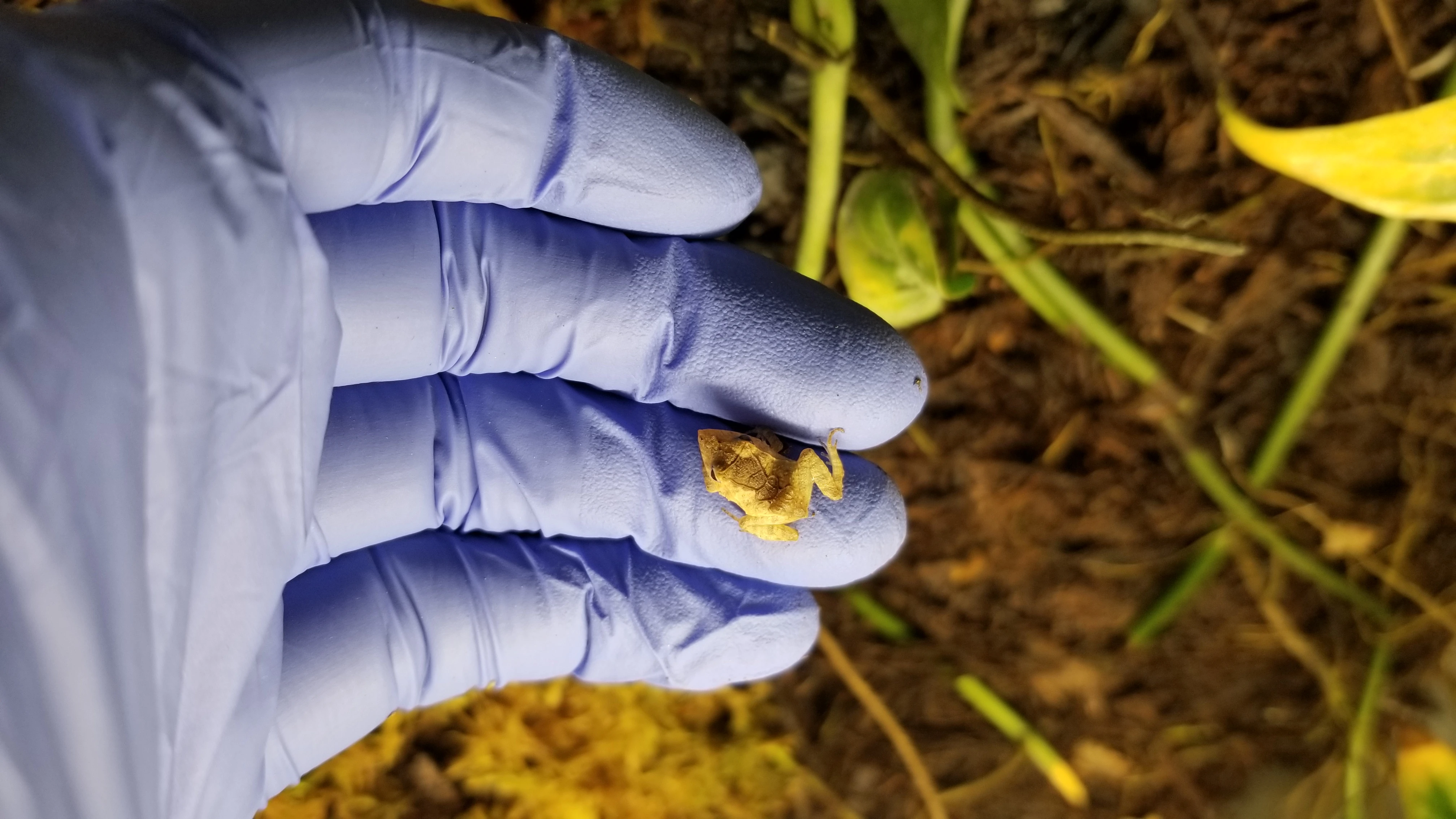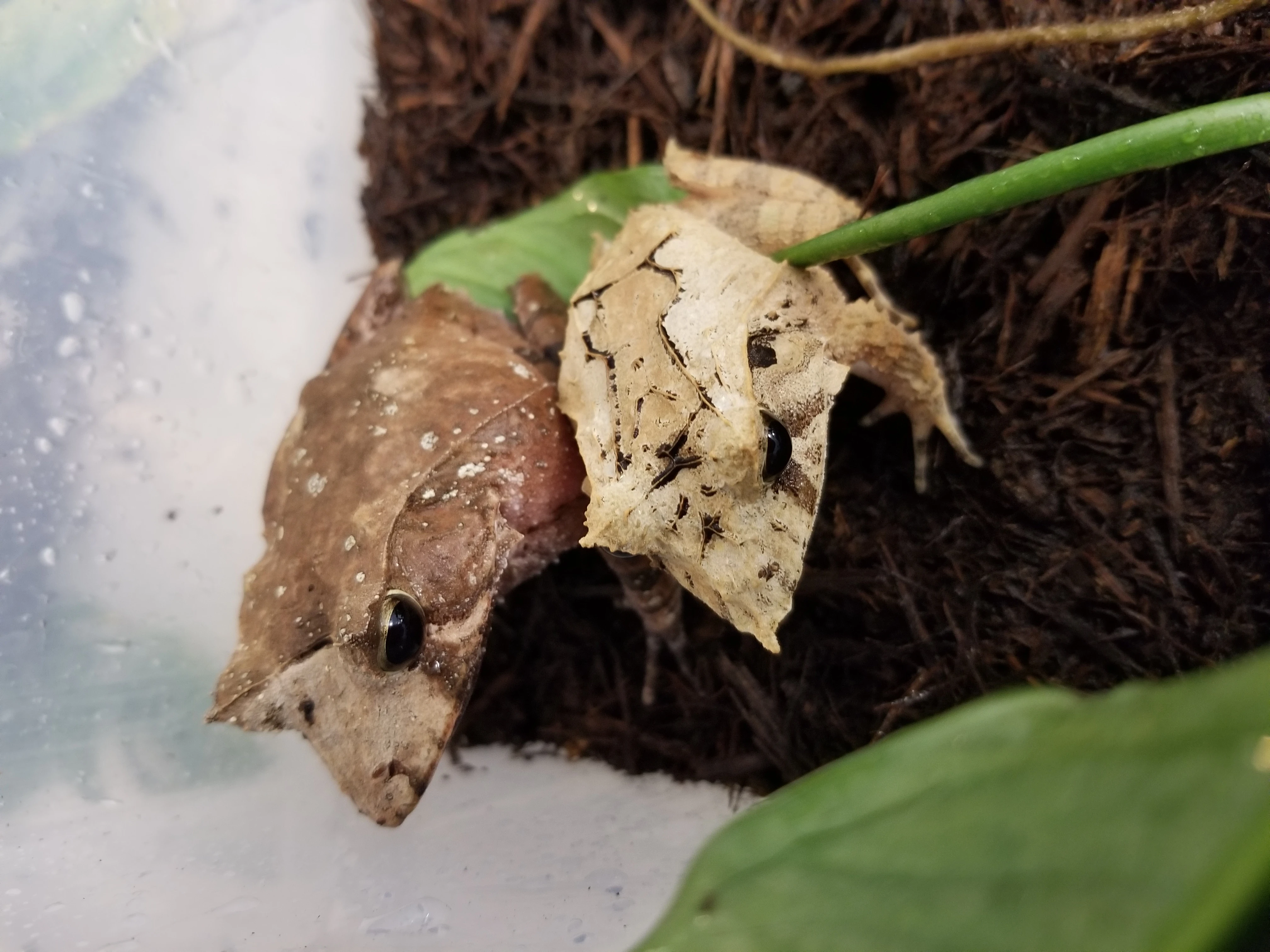
Solomon Island Leaf Frogs
Ceratobatrachus guentheri
By: Randilyn Halvorsen

An underrated pointy frog
**UNDER CONSTRUCTION**
The Solomin Island Leaf frog, or Silf, is often overlooked but I think these loud pointy frogs are fun! They are a dirt loving frog found in tropical forests of the Solomon Islands in Southeast Asia. There is no tadpole phase for these frogs, they develop into fully formed froglets inside a large egg underground. They grow quickly and obtain a size of 3-5 inches as adults. Silfs rank on the care scale as Easy!
Silfs are forest floor mimics and come in a variety of colors and patterns designed to blend into the leaf litter. Many grow pointed bits of skin on their nose, eyebrows, chins and arms, giving them an even more cryptic look. These points can be knocked off or damaged in wild caught or stressed animals that jump into walls.
The male Slif is fairly noisy and they have a few distinct types of calls. Some are trilly like a bird and some sound like a chihuahua... or a bark. The males can bark-sing all night long when they are in courting mode. It can get loud, especially when more than two males are singing back and forth at each other. Your roommates upstairs will hear them. I personally find it quite peaceful. It is unlike any other frog call.
Unfortunately, most Silfs that are found in pet stores and reptile shows are wild caught. There are a few people that are working with captive bred lines but not enough.
Husbandry Basics
Temperature: 72-76 degrees F
- I do not give adult frogs any heating equipment as the room temperature is a consistent 73 degrees. For 6 hours a day, they receive daylight bulbs that raises the temperature 2 degrees inside enclosures. While the leaf frog is usualy found in the dirt, I have found them cryptically basking high in branches under lights.
Humidity: High, 80%+ Swamp-like. The leaf frog requires at least every-other-day misting and prefers a wet, mud-like substrate. I do NOT provide water bowls or any water feature as they are not good swimmers. Young ones can easily drown.
Enclosure: Silfs do well in a variety of enclosure styles, a fully bioactive, a glass enclosure or a plastic tub, it really doesn't matter as long as the husbandry parameters are met.
- I currently keep Silfs in multiple styles but the rubbermaid tub method is my preferred enclosure for reproduction.
- The bioactive is the most fun because you can watch the silfs make use of the space. They dig and throw dirt, bury themselves and act like little bulldozers. Some plants may not survive but I find that slifs enjoy the plants immensley. They dig holes specifically under low hanging pothos leaves or climb to perch in bromeliads and other stiff flat leaves.
Substrate: Very wet hardwood mulch or ABG style mix.
- We use a shredded hardwood mulch from a local garden center as substrate. We add water and mosquito bits (to prevent gnats) and that is it.
- Every 5 or so months the mulch is completely replaced as it does break down quickly.
- Any moisture retaining frog-safe substrate will suffice for Silfs. The key is to keep it wet without rotting.
Feeding: Silfs should eat every other day on crickets and dubia roaches.
- I rotate between a calcium dust and a general amphibian vitamin, every feeding.
- Adult leaf frogs readily eat anything that will fit in their large mouths. They will eat off tongs with patience but I don't find it necessary unless I'm making sure an individual is getting enough food when kept in groups.
- Froglets start on hydei fruit flies but within a few weeks move up to pinhead crickets. A few weeks later, the small frogs will eat anything from crickets, dubia, isopods and worms.
- They are triggered by fast moving large items, so I find crickets and dubia to be the most appealing.
- They will eat smaller frogs so always keep silimar sized frogs together.
Social: Silfs can live solo or adult slifs can live in groups of 1 male with a few females.
- Only keep frogs together of the same size. Silfs will cannibalize if they can fit it in their mouths.
- Never house males together. They will harass each other.
- I keep adults in groups of (1 male 1 female) or (1 male 2 females).
Reproduction: Coming Soon



